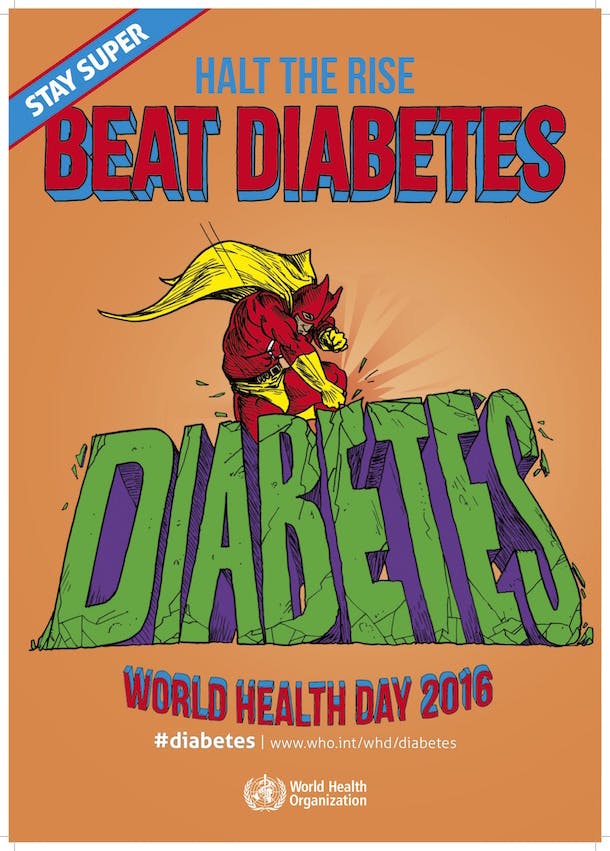Did you know that there are currently an estimated 442 million people living with diabetes in the world? According to the World Health Organization (WHO), diabetes caused 1.5 million deaths in 2012 and higher-than-optimal blood glucose caused an additional 2.2 million deaths by increasing the risks of cardiovascular and other diseases.
Those numbers will continue to increase unless we make some drastic changes.
That is why on World Health Day on April 7, WHO is issuing a call to action campaign, “Stay Super, Beat Diabetes” and launching its first Global Report on Diabetes. The new report highlights the main factors driving the increase of diabetes; challenges in countries to address these epidemics; and measures required to prevent, detect, and treat diabetes.
WHO is also calling on governments to ensure that people are able to make healthy choices and that health systems are able to diagnose, treat, and care for people with diabetes. It encourages individuals to eat healthy, be physically active, and avoid excessive weight gain.
As part of the Sustainable Development Goals, WHO Member States have set an ambitious target to reduce premature mortality from non-communicable diseases – including diabetes – by one third by 2030.

Here’s what you need to know and how you can help the world achieve that target.
Diabetes is a chronic disease with three main types: type 1 – when the pancreas does not produce enough insulin (a hormone that regulates blood glucose); type 2 – when the body cannot effectively use the insulin it produces; and gestational diabetes – when women develop hyperglycemia (raised blood sugars) during pregnancy. The increased glucose of all three types attacks the body’s organs and, over time, can lead to heart attacks, strokes, kidney failure, leg amputations, vision loss, and nerve damage.
The biggest risk factor for type 2 diabetes is excess body fat. Other risk factors include family history of diabetes, unhealthy diet, physical inactivity, increasing age, high blood pressure, and ethnicity.
Most type 2 diabetes cases are preventable, and all diabetes cases are treatable. Simple lifestyle measures have been shown to be effective in preventing or delaying the onset of type 2 diabetes. Maintaining normal body weight, engaging in regular physical activity, eating a healthy diet, and avoiding tobacco use can reduce the risk of diabetes.
Most diabetes deaths occur in low- and middle-income countries, which is an equity issue because many doctors in low-income countries do not even have access to the basic tests and services to diagnose and treat people with diabetes. Increasing access to diagnosis, self-management education, and affordable treatment are vital components of the response to beat diabetes.
Want to help raise awareness so we can beat diabetes? Check out WHO’s Stay Super, Beat Diabetes campaign and WHO’s World Health Day information to learn more. Also watch and share WHO’s Halt to Rise video to learn more about how diabetes works. You can also join and share the conversation online with #Diabetes.



 View All Blog Posts
View All Blog Posts